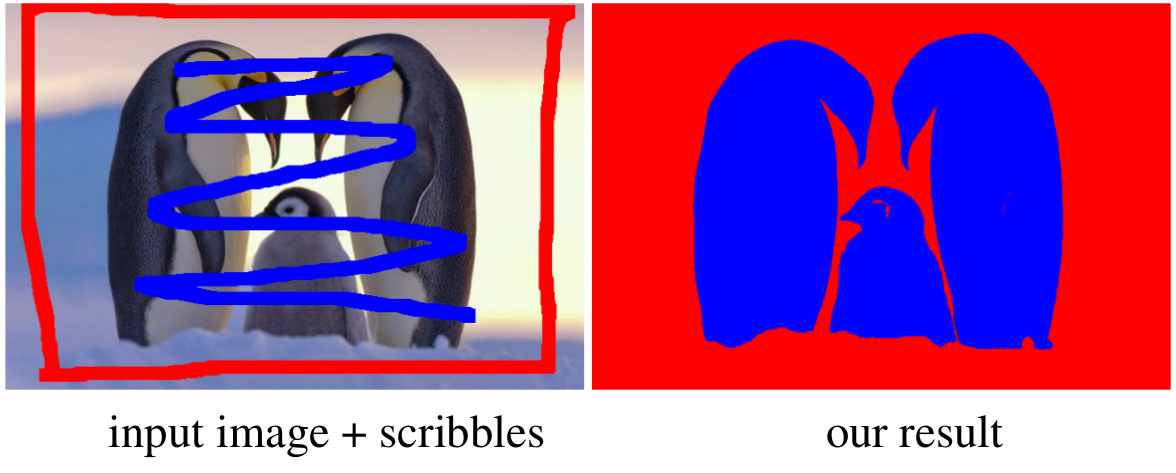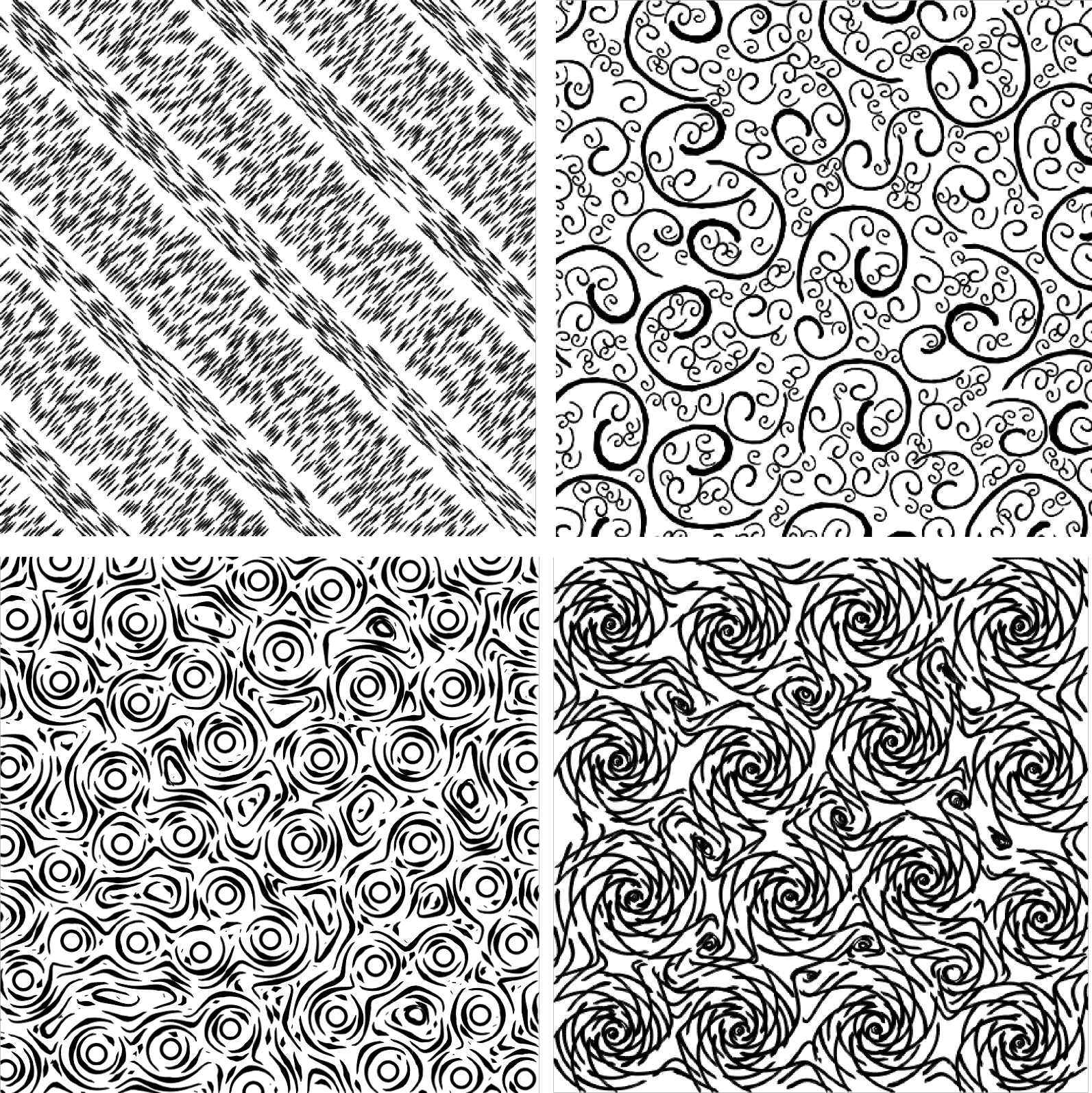Section: New Results
Image creation and editing
Accurate Binary Image Selection from Inaccurate User Input
Participants : Subr Kartic, Paris Sylvain, Soler Cyril, Kautz Jan.
Selections are central to image editing, since they are the starting point of common operations such as copy-pasting and local edits. Creating them by hand is particularly tedious and scribble-based techniques have been introduced to assist the process. By interpolating a few strokes specified by users, these methods generate precise selections. However, most of the algorithms assume a 100% accurate input, and even small inaccuracies in the scribbles often degrade the selection quality, which imposes an additional burden on users. In this work, we propose a selection technique tolerant to input inaccuracies (See example on Figure 9 ). We use a dense conditional random field (CRF) to robustly infer a selection from possibly inaccurate input. Further, we show that patch-based pixel similarity functions yield more precise selection than simple point-wise metrics. However, efficiently solving a dense CRF is only possible in low-dimensional Euclidean spaces, and the metrics that we use are high-dimensional and often non-Euclidean. We address this challenge by embedding pixels in a low-dimensional Euclidean space with a metric that approximates the desired similarity function. The results show that our approach performs better than previous techniques and that two options are sufficient to cover a variety of images depending on whether the objects are textured. This work has been published to the Eurographics Conference [15] .
|
Discrete Texture Design Using a Programmable Approach
Participants : Hugo Loi, Thomas Hurtut, Romain Vergne, Thollot Joëlle.
Many rendering methods use discrete textures (planar arrangements of vector elements) instead of classic bitmaps. Discrete textures are resolution-insensitive and easily allow to modify the elements' geometry or spatial distribution. However, manually drawing such textures is a time-consuming task. Automating this production is a long-time studied subject. The methods designed for this purpose deal with a difficult tradeoff between the reachable variety of textures and the usability for a community of users. In this work, we show that considering discrete textures as programs allow for a larger variety of textures than relying on a given model. This work has been as a Siggraph 2013 talk [18] .




